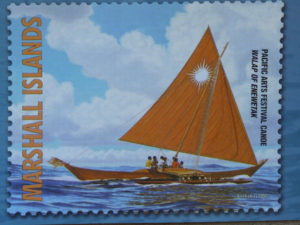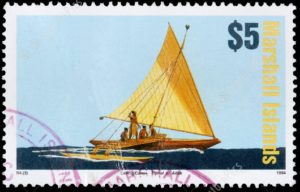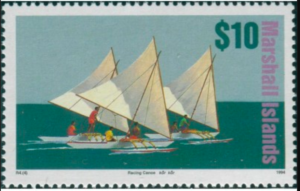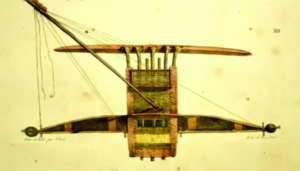The Marshallese crafted different sizes of canoe types for their different needs.
- Walap (Walop) canoes are extremely large canoes, measuring up to 100 feet and were designed for open ocean travel. They can carry up to 40–50 people. Today they are rarely if ever built and few are in existence.

- Walap
- Tibñõl (tipnol) canoes are mid-sized sailing canoes that are 18–30 feet long and capable of carrying up to 3–10 people. The Tipnol is built for speed and is often used for fishing both inside the lagoon as well as in the open sea.

Tibñõl
- Kõrkõr canoes are the smallest. They are small paddling canoes, many times rigged with a sail. This one or two person canoe was specifically designed for fishing and travel inside the protected waters of the lagoon or in good weather, to be used on the leeward, ocean side of the islands. Because of its ease of construction and use in canoe races it is the most common canoes seen today.

Kõrkõr
- Riwut canoes are miniature toy canoes up to 7 feet long that kids and adults race against each other.
The hulls of the Marshallese outrigger canoes are made from the breadfruit tree and the mast is made from coconut trees. The sail was traditionally made from woven pandanus leaves but are now made of nylon
The Marshallese outrigger canoes has several important design features that help make it swift and efficient.
- First, is a double fronted hull that is designed so the main hull is always to the leeward (side away from wind) and its small outrigger counter-balance up on the windward side (side towards wind). This is possible because as the canoe tacks the sailors can easily switch the main mast from one end (bow) to the other (stern). Thus the canoe is able to sail with either end forward, thereby keeping the outrigger always on the weather (windward) side.
- The second notable design feature is its asymmetrical main hull. This hull helps lift the canoe to the windward side, much as a bird’s wing lifts its weight into the sky. This asymmetrical main hull’s two sides differ: the lee side (or side away from the wind) is flattened, while the windward side (towards wind) is more curved for lift like the top of a bird’s wing. The shape counteracts the drag caused by the outrigger. If the hull was symmetric, the canoe would systematically be dragged in the direction of the outrigger. The asymmetric shape pushes the hull away from the outrigger, so that the combination of the outrigger and the asymmetric hull keeps the canoe tracking straight. It also combats the sideways drift (leeway) of the canoe under the influence of the wind, as the shape counteracts the drift. This asymmetric hull shape is also found on canoes in nearby countries, such as the Federated States of Micronesia and in Kiribati.

Asymmetric Hull
- Next, is the outrigger that is designed to move independently from the main hull and act as a shock absorber from rough seas.
- Finally, the platform sits atop of the outrigger and is lashed out to the leeward side of the main hull extends over nothing but the ocean. This seemingly precarious lee platform enables the voyagers to carry a greater quantity of cargo. Most voyaging canoes had small thatch houses built up for women and children. There is a sophisticated balance to these wide outriggers designed for ultimate windward speed and cargo carrying capacity.
Source:
- Life in the Republic of the Marshall Islands = Mour ilo Republic eo an Majõl. by Marshall Islanders; edited by Anono Lieom Loeak, Veronica C. Kiluwe, and Linda Crowl; translated by Veronica C. Kiluwe, Maria Kabua Fowler, and Alson J. Kelen. 2004.
- ??
